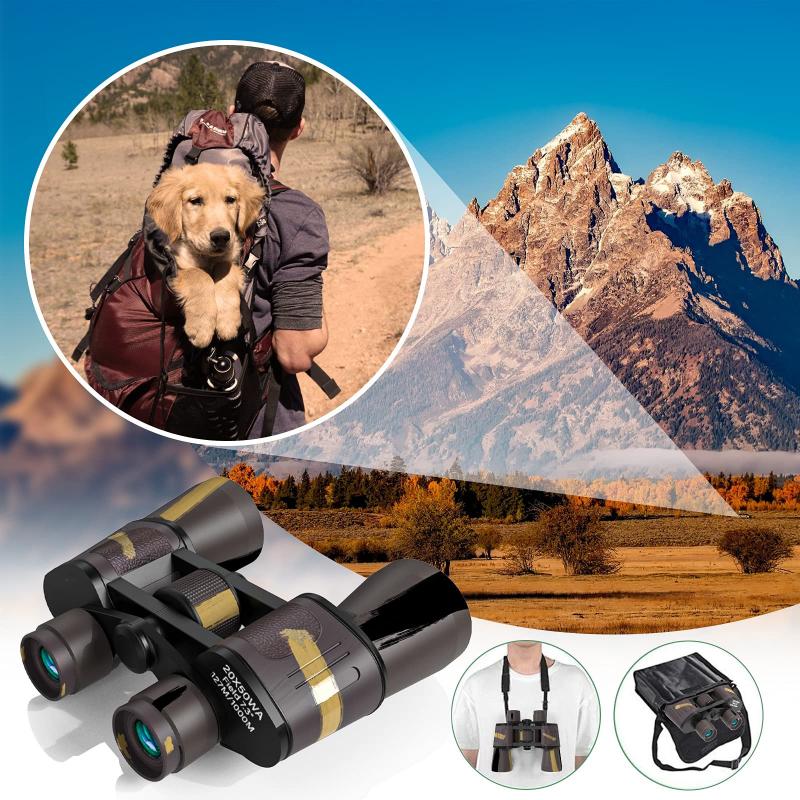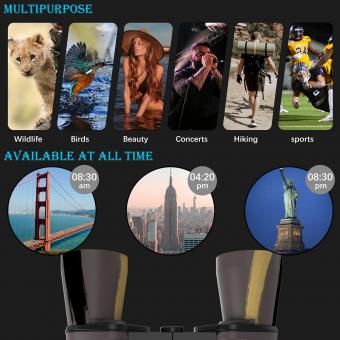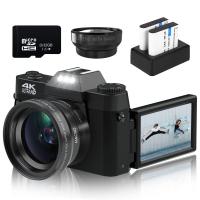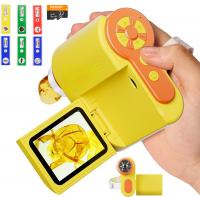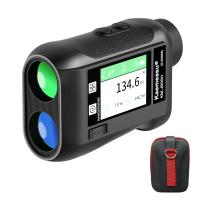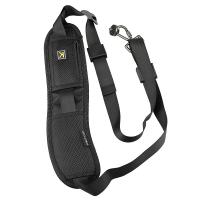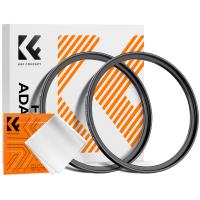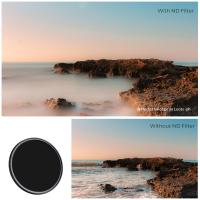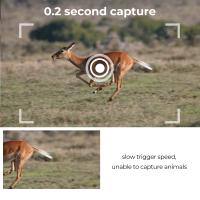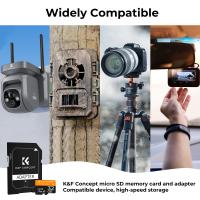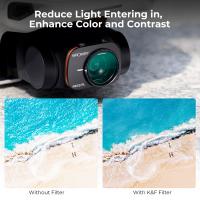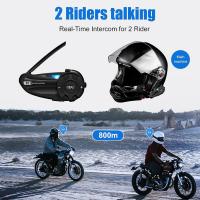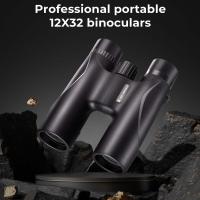What Binoculars Do The Military Use ?
The military uses a variety of binoculars depending on the specific needs and requirements of the mission. Some of the most commonly used binoculars by the military include the Steiner Military/Marine binoculars, the Leupold Mark 6 binoculars, and the Vortex Razor HD binoculars. These binoculars are designed to be rugged, durable, and able to withstand harsh environments and extreme weather conditions. They also often feature advanced optics and technology to provide clear and precise images, even in low light conditions. Additionally, some military binoculars may have specialized features such as rangefinders, compasses, and night vision capabilities to enhance their effectiveness in the field.
1、 Night Vision Binoculars
What binoculars do the military use? The military uses a variety of binoculars, but one of the most important types is night vision binoculars. These binoculars allow soldiers to see in low-light conditions, making them essential for nighttime operations.
The latest night vision binoculars used by the military are highly advanced and offer a range of features. They use thermal imaging technology to detect heat signatures, allowing soldiers to see through darkness, smoke, and fog. They also have high-resolution displays that provide clear images even in low-light conditions.
One of the most important features of these binoculars is their durability. They are designed to withstand harsh environments and are often waterproof and shock-resistant. This makes them ideal for use in combat situations where soldiers need reliable equipment that can withstand the rigors of the battlefield.
In addition to night vision binoculars, the military also uses other types of binoculars, such as rangefinders and spotting scopes. These devices are used for a variety of purposes, including surveillance, target acquisition, and reconnaissance.
Overall, the military relies heavily on binoculars for a wide range of operations. Whether it's night vision binoculars for nighttime operations or rangefinders for long-range targeting, these devices are essential tools for soldiers in the field.
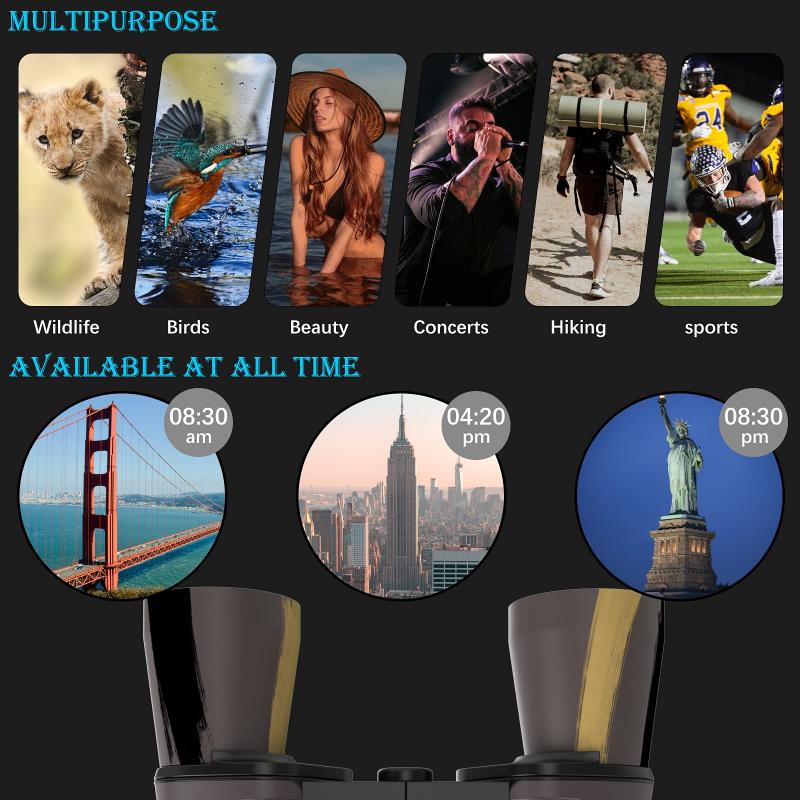
2、 Thermal Imaging Binoculars
What binoculars do the military use? The military uses a variety of binoculars, but one of the most advanced types is the Thermal Imaging Binoculars. These binoculars use thermal imaging technology to detect heat signatures, making them ideal for use in low-light or nighttime conditions. They are also useful for detecting hidden objects or people, as the thermal imaging can penetrate through camouflage or other obstructions.
The latest models of Thermal Imaging Binoculars are even more advanced than previous versions. They have improved image resolution and can detect heat signatures from greater distances. They also have longer battery life and are more durable, making them suitable for use in harsh environments.
In addition to military use, Thermal Imaging Binoculars are also used by law enforcement agencies, search and rescue teams, and wildlife researchers. They are a valuable tool for any situation where visibility is limited or where detecting heat signatures is important.
Overall, the use of Thermal Imaging Binoculars by the military and other organizations highlights the importance of advanced technology in modern warfare and other fields. As technology continues to advance, we can expect to see even more advanced binoculars and other tools being developed to meet the needs of various industries and applications.
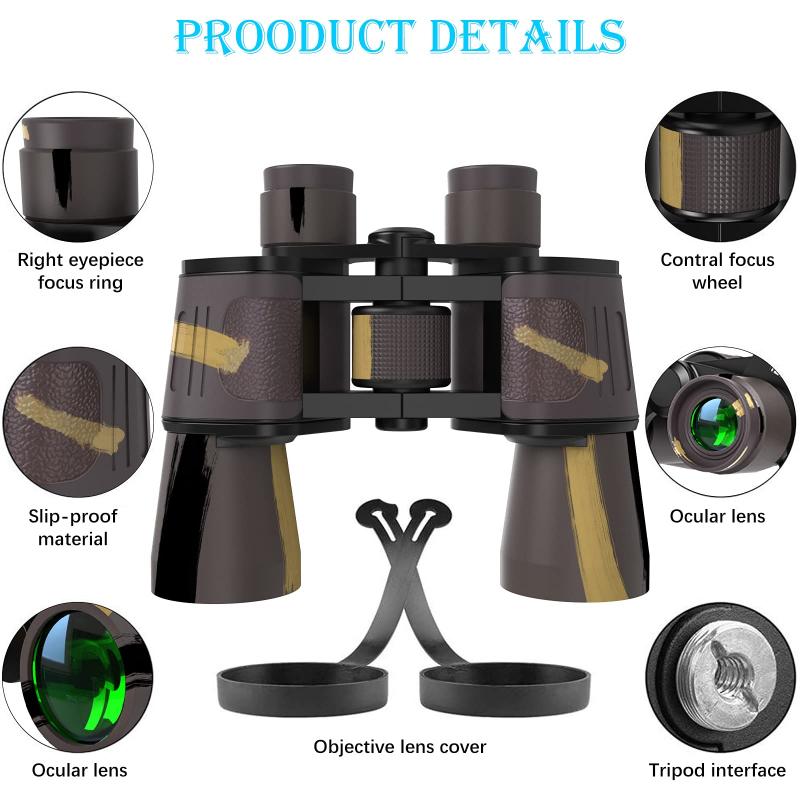
3、 Laser Range Finding Binoculars
What binoculars do the military use? The military uses a variety of binoculars, but one of the most advanced types is the Laser Range Finding Binoculars. These binoculars are equipped with laser technology that allows soldiers to accurately measure the distance between themselves and their targets. This is a critical feature for military operations, as it enables soldiers to make precise calculations when firing weapons or calling in airstrikes.
In addition to their range-finding capabilities, military-grade binoculars are also designed to withstand harsh environments and extreme weather conditions. They are often waterproof, fog-proof, and shock-resistant, making them ideal for use in combat situations.
The latest advancements in military binocular technology have also incorporated thermal imaging and night vision capabilities. These features allow soldiers to see in low-light conditions and detect heat signatures, making it easier to identify potential threats and targets.
Overall, the use of advanced binoculars in the military has become increasingly important in modern warfare. With the ability to accurately measure distances, withstand harsh conditions, and incorporate advanced imaging technology, these binoculars are a critical tool for soldiers on the battlefield.

4、 Image Stabilized Binoculars
What binoculars do the military use? The military uses a variety of binoculars depending on the specific needs of the mission. However, one type of binoculars that have become increasingly popular among military personnel are image stabilized binoculars.
Image stabilized binoculars use technology to stabilize the image seen through the lenses, reducing the shakiness and movement caused by hand tremors or other external factors. This makes them ideal for military use, where stability and accuracy are crucial.
One example of image stabilized binoculars used by the military is the Canon 18x50 IS binoculars. These binoculars have been used by the U.S. Marine Corps and other military branches for reconnaissance, surveillance, and target acquisition. They are also waterproof and shock-resistant, making them durable and reliable in harsh environments.
In addition to the military, image stabilized binoculars are also used by law enforcement, hunters, and outdoor enthusiasts. They have become increasingly popular due to their ability to provide a clear and stable image, even in challenging conditions.
Overall, image stabilized binoculars have proven to be a valuable tool for the military and other professions that require precision and accuracy. As technology continues to advance, it is likely that we will see even more advanced versions of these binoculars in the future.
